Art and Fashion as Modes of Socialization and Liberation for Women – The Oxymoronic fashion available to women throughout history.
Form over function – the underlying and forever perpetuated theme that constantly reminds us that what we wear is more than just what we wear. Especially if you are a woman. The limited collection of men’s clothing on display were of military men and firefighters – all examples of function and form. Men are, according to this exhibit/ the items on collection (in the College of Human Ecology), wear clothing that fits their tasks. They wear flame retardant clothing and colors that help the camouflage during their militarian days. Women on the other hand, were socially forced to wear corsets even during pregnancy. The never changing form of the woman doesn’t fit her function(s).
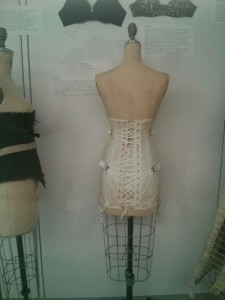
Corset for pregnant women, can be adjusted through pregnancy terms, but is still used to keep the “womanly” curves.
Fashion is more than just what we wear. It is a telling history of political, social, and economic movements. The broad shoulder pads that women in male-dominated professions donned was more telling of the need for women to look more masculine to gain more respect within their fields. Yet the dress must be adorned in teddy bears to keep femininity high. You are to have the broad controlling shoulders of a man to gain respect, but you are nevertheless not allowed too much power with the need to include soft, nurturing, and mothering prints such as teddy bears – an oxymoron of sorts.
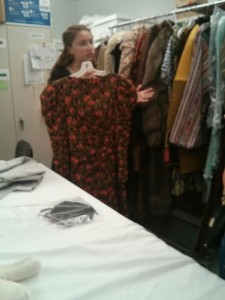
Teddy bear printed dress. In form, it included broad shoulder pads, but still accentuated society’s need to always show the feminine form.
Although not part of the Collection, Samantha Stern’s ‘Malevolent Empowerment’, perfectly encompassed the reality that most women battle with in the name of fashion. The dress featured a 300 pound brass/wire&metal mesh petticoat/train, but exhibited an unapologetic top piece, where if the wind blew a certain direction the top would be exposed in numbers of different degrees. This beautifully highlights the 1920s feminism – exposed but immobile, discrete yet uncaring. The impossibility of movement within the piece is clearly symbolic of the immobility of women within society, yet there is still the illusion of progression through the exposure of free sexuality.
Kwong’s dress perfectly encompasses the forever fading, yet harsh reality of fashion – it is either liberating or socializing us all. For a very long time, women’s fashion was about the form (the over sexualization and accentuation of the feminine form and how that form has to be). Not until recently has more mainstream fashion resulted in function for women, however we still see the prevalence of the form in all the things we wear. The need for a synched waist is seen across all types of fashion and across ethnic boarders. Through fashion, we are socialized to fit a certain mold, but through fashion we are also liberated to explore the different mediums of empowerment and privilege. Fashion it’s self is contradictory, it is oxymoronic – it is both good and bad for the woman. How we wear things and What we wear are indicators of not only the societal conditions of women in the era, but also indicators of the progression (or lack there of) of feminist movements.
Metal as a form of conforming to form, but also metal as a malleable and changeable substance. Perhaps the status of women is not more telling than the fashion of metal – status of the woman is changing, but it is changing slowly.

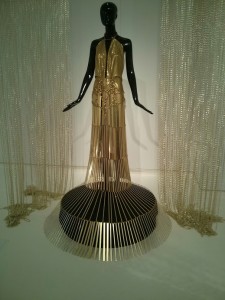
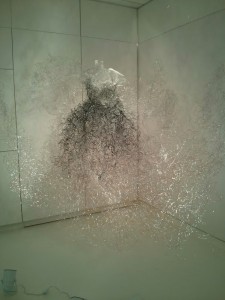
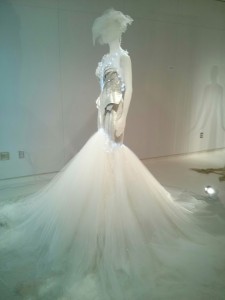
Hi Leticia!
I was really hoping to attend this event, however something came up and I was unable to. Thank you for sharing your experience, and for the pictures! The clothes look beautiful and I bet they were even more stunning in person. I found the part about forcing pregnant women to wear corsets interesting, it seems like that is something you shouldn’t do…
-Denise
Unfortunately I couldn’t attend this event, but I throughly enjoyed seeing the photos and you did an excellent job giving insight on the event. I think that people often overlook the message of what our clothing portrays. “How we wear things and What we wear are indicators of not only the societal conditions of women in the era, but also indicators of the progression (or lack there of) of feminist movements.” This line demonstrates this point.
I like how you clearly showed some of the pieces and your take on each one in terms of the sexism of the time.